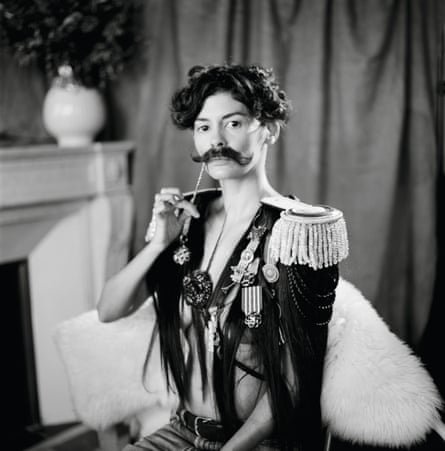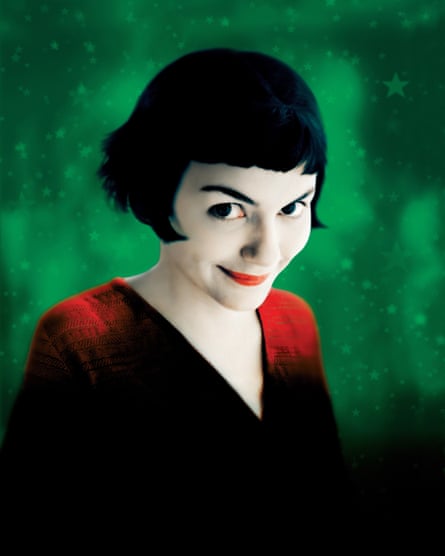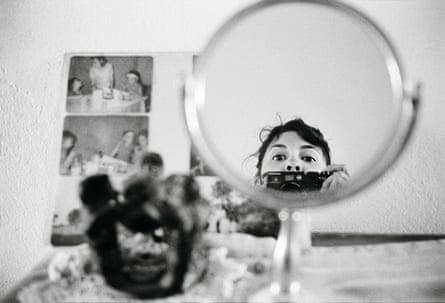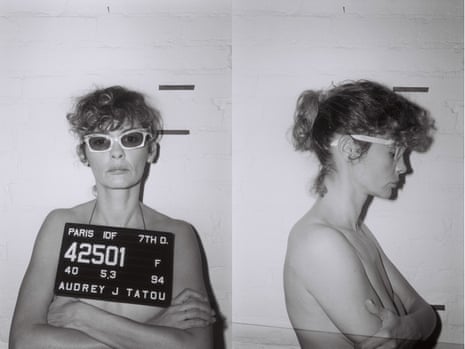‘I’m an interesting subject,” says Audrey Tautou, the French actor who exhibited her photographs for the first time this summer at the Arles festival under the title Superfacial. But it’s not her who decided that, she points out – it has been drummed into her over the 15 years or so since she became an international star courtesy of Jean-Pierre Jeunet’s film Amélie.
Tautou starred as the eccentric young Parisienne who, against the artfully shot background of the streets of Montmartre, sets her sights on increasing the sum of human happiness, one kind act at a time. But it wasn’t simply that the film – charming, whimsical and filled with a particularly French brand of tragicomedy – was a hit – it was that Tautou’s heart-shaped, retroussé-nosed and bob-framed face smiled out from every poster.

Her celebrity – she was only 25 when the film was released, with a handful of films under her belt – was instant and overwhelming. “To me,” she explains, “it was not normal.” The experience that befell her “was so unexpected and so weird and so much that suddenly I realised how the imagination of the public could create you as a new you”.
Tautou says that she was always interested in creating work, and in living a life less ordinary, rather than pursuing fame. After Amélie, the drawbacks became apparent: “Because your face is known, people will see it before you. It’s like a glass screen you can see through but in fact there’s always a reflection of their imagination, their fantasme.”
Many of those scrutinising her were journalists and she became acutely aware of their unequal relationship. All these anonymous people, she realised, were the engine of her fame and yet she had little awareness of who they were – it was simply not part of the equation. So she started to photograph them: “I wanted to keep a memory, because for all those moments I was spending with them I knew that for me, I wouldn’t keep anything… I had the feeling that my time was evaporating without any memories, any human little gift.”
The pictures of the journalists are both unremarkable – snaps of a group of people with little resonance to the viewer – and telling: the occasional flash of wariness, the apparently open-faced smile that might indicate a genuine amusement at the tables being turned or simply a willingness to play along, to indulge the superstar and keep her sweet.

In her self-portraits, she is far more dramatic and playful; recreating Some Like It Hot in order to pose next to Tony Curtis’s fake oil tycoon; as a bare-chested police suspect, snapped for mugshots with arms folded over her breasts and a downturned mouth; as the photographer, camera in hand, her face obscured by a mudpack or a woolly hat. In one, Tautou perches, naked, at the edge of pool, a foot poised to dip in; she tells me that some people have read it as though she were a mermaid, ready to return to the water. But she links it far more closely with the myth of Narcissus, in which a beautiful youth becomes dangerously enraptured by their reflection.
The lure is the lure of celebrity – she demonstrates by singing “Come, come and be famous” – and touching the water is the point of no return, the dive into “les ténèbres” – the darkness. “Fame is more powerful than talent,” she explains, and people are prepared to be drawn to the famous no matter what they’re doing. “I think for everybody celebrity, fame, is a dream. People see it as a blessing.”

By dressing herself up, she says, she enters a kind of “no woman’s land”, where she is neither herself nor a made-up figure that might readily be associated with her. It’s a sort of “fake instantaneous moment”. “It’s not realistic mise-en-scène. My subject, in these photos, to me it’s not a real proper character. It’s somebody between the character and who I am. It’s somebody just right in the middle of the travel between the regular humans, the normal humans, and the one who’s going to become a character.”
All this is a long way from the photographs that she loved to take as a child, and from the actor who, post-Amélie, starred opposite Tom Hanks in The Da Vinci Code, as the famed fashion designer in Coco Before Chanel and in the highly acclaimed films Priceless and A Very Long Engagement. It is also far removed from her work as a model, for clients including Chanel and L’Oréal. And yet Tautou has been steadily building up her portfolio over the last two decades, working privately and not even employing a professional photographic laboratory until recently.
“Now I’m trying to make everything exist,” she says. When she finally decided to show her work, “it was because there was no other option. I wanted to show them, no matter where, it could have been on a field in the middle of nowhere. I wanted them to be out.”
Partly, this is a matter of perfectionism: “I try to express some humour in my photos, but when I’m working and when I’m presenting a job, I know that I would never give up on anything. I would never say, ‘That’s all right, it’s going to be OK.’ It’s impossible for me to think that way and that’s a problem. I think if I was less exigent with myself, maybe I would be more productive, because I would put less pressure on my shoulders.”

She loves the poetry and the evanescence of photographers such as Nan Goldin, Diane Arbus and the great chronicler of Parisian life, Brassaï. Is it because, perhaps related to her work as an actor, she is interested in those who suggest the story beyond the frame? She agrees: “I like when an image could be just one of several others which would create a story. That you can imagine who are those people or what would happen before, what’s going to be next; I like when there’s a past and a future that we can imagine when we see photos.”
For the time being, Tautou is focusing on other photographic projects, although she insists that they are not ready for her to talk about, partly because, she says, she is so slow. She knows she will never stop taking photographs and gives the distinct impression that she will not be able to keep them to herself. “I had worked so much,” she says of her current exhibition. “I had this project in my head for many years and it had to exist. Because if it still existed only in my brain, only in my little four-wall house, it was suffocating. So I was not scared any more.”
Audrey Tautou: Superfacial will be on display at Jimei x Arles international photo festival in Xiamen in China from 25 November to 3 January

Comments (…)
Sign in or create your Guardian account to join the discussion